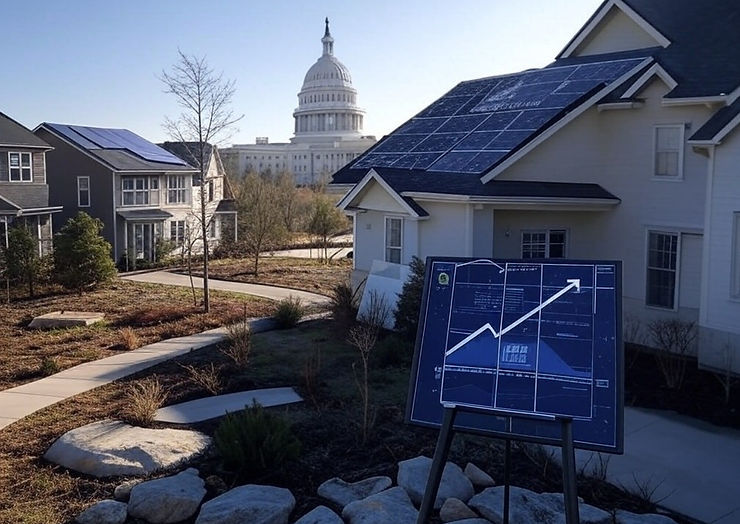The Impact of the 2025 US Government Change on the Residential Solar Market
- Paul Bristow

- Feb 14
- 3 min read
Updated: Mar 4

The recent shift in the US government following the 2025 election has sent ripples through various sectors, including the burgeoning residential solar market. Here, we explore how this change might alter the landscape for solar energy in American homes.
Policy Uncertainty and Incentives
The solar industry heavily relies on federal and state incentives to make solar installations economically viable for the average homeowner. The Inflation Reduction Act (IRA) of 2022 significantly boosted solar deployment by enhancing tax credits, including the Investment Tax Credit (ITC), and introducing new adders for domestic content and energy communities. However, with a new administration in place, there's uncertainty about the continuation or modification of these incentives.
Federal Solar Tax Credit: The ITC, currently at 30%, is slated to decrease unless extended or modified by new legislation. Any reduction or elimination could dampen the appeal of solar installations for homeowners looking to benefit from this tax break.
State Incentives: States like California, which have historically driven residential solar growth, have seen policy shifts with net metering reforms. While these changes predate the 2025 government transition, the new administration's stance on state-level solar policies could either exacerbate or mitigate these impacts.
Market Growth Projections
Analysts had forecasted a robust growth trajectory for solar energy in the US, with projections suggesting that solar would account for a significant portion of new energy capacity additions. However, the political shift introduces potential variables:
Installation Volumes: The residential solar market was expected to recover in 2025, growing by approximately 14% after a contraction in 2024 due to high interest rates and policy changes in key states. The stability of this growth now hinges on the new government's environmental and energy policies.
Manufacturing and Tariffs: The US has been increasing its domestic solar manufacturing capacity, aiming to reduce reliance on imports. New tariffs on solar components from Southeast Asia could impact installation costs, though the domestic supply chain has been expanding to meet demand.
Consumer Confidence and Financing
Financing Costs: With interest rates having a significant influence on solar adoption, any policy from the new administration that affects economic growth or inflation could indirectly impact the affordability of solar financing for homeowners.
Consumer Sentiment: Political rhetoric can sway consumer confidence in clean energy. Posts on X and other social media platforms reflect a concern among solar advocates about the potential rollback of clean energy support, which might deter potential solar adopters.
Long-term Outlook
Despite immediate uncertainties, the long-term outlook for solar remains positive due to the fundamental drivers of cost reductions in solar technology, increasing electricity rates, and a growing awareness of climate issues:
Technological Advancements: Continued innovation in solar technology, including more efficient panels and battery storage, could keep the sector resilient against policy headwinds.
State and Local Initiatives: Even if federal support wanes, many states continue to push for renewable energy targets, offering their own incentives or subsidies.
Economic Benefits: Solar energy continues to offer cost savings over time, appealing to homeowners regardless of federal policy shifts.
Eco-NRGY Solutions' Role
In this changing landscape, Eco-NRGY Solutions remains committed to helping our clients leverage the technology and navigate the financial programs and incentives available so they can save money. Our team stays up-to-date with the latest policy changes, ensuring that our clients can maximize their benefits from solar energy, even in the face of political uncertainty. We guide homeowners through the maze of potential tax credits, rebates, and local incentives to make solar installation not just an environmentally sound choice, but a financially smart one as well.
In conclusion, while the 2025 government change introduces uncertainty, the residential solar market in the US has shown resilience in the past. The industry's growth will depend on how the new administration navigates policy, the effectiveness of state-level actions, and the continued push for sustainable energy solutions. Homeowners and investors in the solar sector should stay informed and possibly accelerate plans if they wish to leverage current incentives before any potential changes take effect.

留言